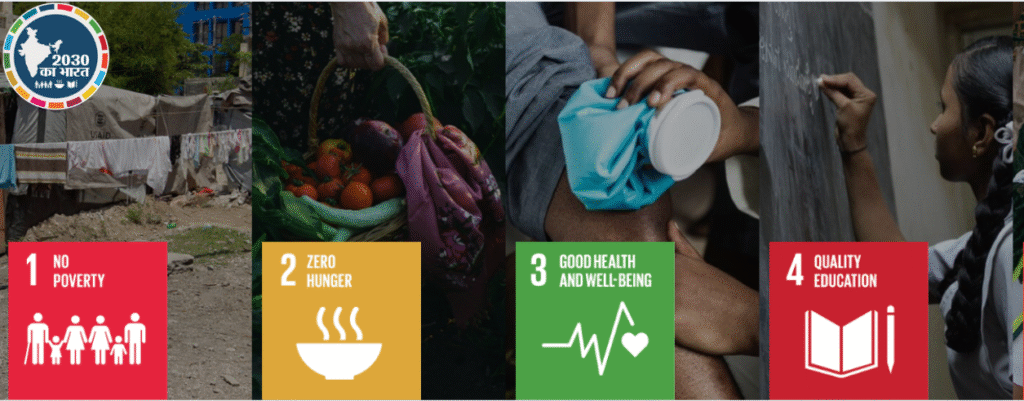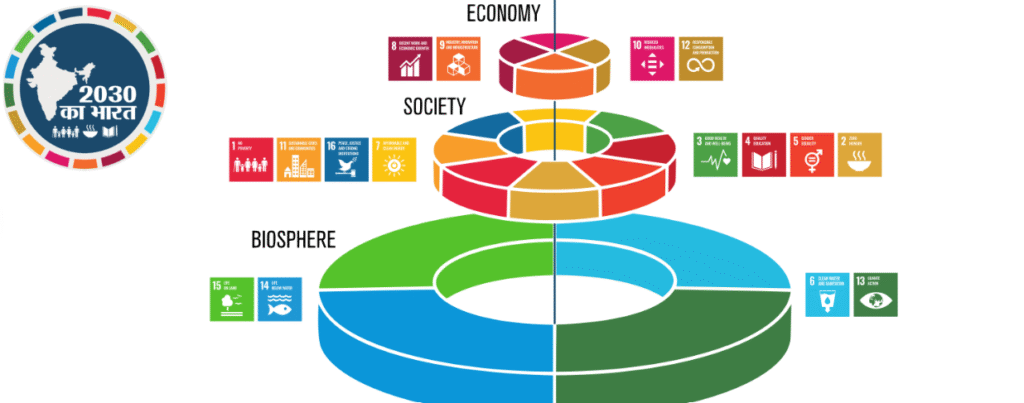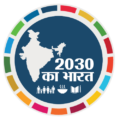Understanding New Forms of Poverty
The old definition of poverty that India’s government followed is now considered outdated, and it is good to see that they have moved on from it. Now the poverty measurement takes into consideration every individual’s gaps in three major segments:
- Health : including malnutrition and infant mortality rates
- Education : such as enrollment and years attended schooling
- Living standards : including electricity, safe drinking water, sanitation, clean fuel, proper housing, and floor
This understanding further helps improve targeting of the most vulnerable households living in rural areas, tribal regions or under developed urban areas, which is executed through the Multidimensional Poverty Index or MPI established by NITI Aayog.

India’s Progress At A Glance
In the last decade, there have been massive changes in India’s poverty alleviation:
- NITI Aayog reports from 2023 suggested that around 135 million Indians were liberated from poverty between the years 2015–16 to 2019–21 .
- During this time, the national MPI score was cut in half .
- Bihar, Uttar Pradesh, Odisha, Madhya Pradesh , and Rajasthan showed the largest slowdowns.
- According to SBI Research 2024 , India is set to remove extreme poverty (under $1.90 a day ) by 2026 .
- The World Bank has commended India’s digital public infrastructure systems such as Jan Dhan, Aadhaar, and UPI for being low-cost and scalable directly to services for the poor.
This momentum is inspiring, but longtime and new challenges still require more innovative, citizen-led solutions.
Indian Methods for Reducing Poverty
Direct Benefit Transfers (DBT)
Thanks to JAM (Jan Dhan–Aadhaar–Mobile ), DBTs:
- Paid grant programs without the risk for ghost or duplicate beneficiaries
- Received remote scholarship programs, pensions, and other subsidized finances
- Encouraged payment accounts for women in the rural areas
Major Welfare Schemes
- MGNREGA : granted rural employment and ensured wages were protected
- Ujjwala Yojana : provided women cleaner fuel access
- PM Awas Yojana : affordable housing and sanitation
- Ayushman Bharat : universal health insurance for more than five crores people
Other Essential Services
- 99% of villages have power nowadays
- 96% of the rural areas have sanitation coverage through Swachh Bharat
- Increased school attendance for girls due to mid-day meal programs and cash transfers
All these schemes help in reducing income poverty and other related deprivations.
Ongoing Challenges That Are Impeding India from Achieving SDG
Despite progress, India still faces significant poverty-related challenges:
- Undernutrition : stunted growth of children remains persistent – 35.5% stunted growth in children below five years as per NFHS-5
- Rural-urban divide : urban poor citizens do not have basic services like water supply, sewage disposal, clinics, and other medical facilities
- Informal Employment : More than 90% of the workforce is employed in the unprotected informal sector
- Climate Impact : Droughts and erratic floods reverse the development progress in agriculture-dominated regions, which is highly detrimental
To overcome these challenges, ‘people’s planning ’ is the main strategy — a bottom-up approach that involves planning and participation from the grassroots level. That is the essence of 2030KaBharat .
How 2030KaBharat Is Aiding in Achieving SDG 1
2030KaBharat is a sub-national initiative focused on trying to achieve implementation of SDGs at a sub-national level with a strong focus on poverty eradication through participatory governance aided by innovation and data.
What Sets It Apart:
Localized Action Plans
- The creation of SDG-focused poverty plans at district level based on local indicators and resources available
- This approach is bottom-up so there are no one-size-fits-all solutions
Community-Driven Implementation
Implementation is done by local institutions such as:
- Panchayats
- SHGs – Self Help Groups
- School management bodies
- Health and nutrition workers
This model provides for effective ground ownership while ensuring transparency and relevance.<h3>Youth-Led Data Tracking</h3>
2030KaBharat trains Youth SDG Ambassadors who are responsible for:
- Tracking welfare programs and poverty metrics
- Providing real-time data updates to public dashboards
- Conducting awareness programs on government scheme entitlements
Transparent Monitoring
Progress is visualized and updated regularly on metrics such as:
- Stunted growth among children
- Enrollment and attendance of students in schools
- Access to toilets and clean drinking water
- Owning a bank account
- Intensity of poverty measured
Collaborative Ecosystem
The initiative forms strategic partnerships between:
- Non-governmental Organizations (NGOs)
- Schools and Universities
- Corporate Social Responsibility (CSR) Partners
- Local Government Authorities
These partnerships enable high-impact, sustainable, accountable, and transformative interventions.

Policy Suggestions for Enhancing India’s Strategy for Combatting Poverty
To accelerate India’s progress, attention should be focused on the following areas:
- Expand infrastructure for addressing urban poverty : Sanitation and housing as well as information and communication technology (ICT) access for informal sector workers in the slum regions
- Enhance health and nutrition : Improvement of anganwadi and maternal care services
- Link welfare benefits with jobs : Provision of relevant vocational training and self-employment opportunities for rural youth and women
- Create two-way mobile service feedback loops : Citizen feedback regarding provided services and schemes should be gathered through mobile phones
- Embed civil society in decision making : Policy making should involve NGOs and lead initiatives like 2030KaBharat to integrate into district-level developmental planning
Final Reflections: Transforming Long-Term Opportunities from Reduction of Poverty
India’s progress is real, yet delicate. Meaningful, lasting work achieved against poverty cannot be through only desperate schemes. It needs to be anchored in community capability, participatory, solid planning, and grounded evidence.
It is here that 2030KaBharat is stepping in to make an impact. 2030KaBharat ensures that people living in poverty are not just passive recipients but active participants in the solutions. It empowers them to monitor, refine, and actively guide their development journeys.
Join the Movement: Participate Actively in India’s Mission for SDGs
Your voice holds value, whether you are a student, policymaker, researcher, or an NGO leader.
You can aid in the following:
Collaboratively design strategies toward a Bharat free from poverty
Support 2030KaBharat
Engage in field research, data collection, or capacity-building workshops
